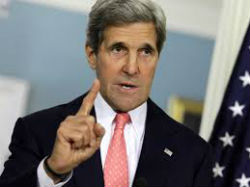The US State Department has allocated most of its $1 billion request for aid to Central America towards development assistance, a further shift from the US’ previously militaristic approach to regional security, characterized by aid packages like Plan Colombia.
On February 2, the US State Department released its Congressional budget proposal for fiscal year 2016, which included just over $1 billion in foreign aid to Central American countries. According to the Washington Office on Latin America (WOLA), the $1 billion requested for 2016 is triple the amount of aid sent to Central America in 2014.
No less than 80 percent of the package is intended for improving civil institutions, civil society, and economic development, according to WOLA. The money requested for purely military and police assistance programs remains at 2014 levels, at roughly $16.5 million.
At a press briefing following the unveiling of the new proposal, Deputy Secretary of State for Management and Resource Heather Higginbottom said the regional funding “will address the underlying social, governance, and economic factors in Central America that drove last year’s crisis in unaccompanied migration – child migration.”
InSight Crime Analysis
The State Department’s $1 billion aid proposal to Central America reflects the US’ wider policy shift in recent years towards institutional capacity-building, rather than strengthening of security forces, as their guiding approach to improving security in Latin America. The 2016 proposal is a far cry from the heavy reliance on military and police assistance programs from previous aid packages like Plan Colombia in the early 2000s and the early phase of the Merida Initiative in Mexico in 2008. Each of these programs accounted for over 75 percent of their respective budgets, according to WOLA. The US’ current security initiative in Central America, CARSI, mixes both hard (counter-narcotic operations) and soft (community-based violence prevention programs) strategies for lowering rates of crime and violence.
SEE ALSO: Coverage of Merida Initiative
The proposal also underscores the growing importance of Central America in the US’ regional security priorities. The amount of funds going towards development assistance suggests the United States is looking for long-term solutions to endemic gang violence in the “Northern Triangle” region (El Salvador, Guatemala and Honduras) — commonly cited as a principal push factor for the child migrant crisis. Selling this angle — a sustainable reduction in the flow of unaccompanied children from Central America arriving at the US border — will likely be the best strategy for getting the proposal approved in a Republican-controlled Congress.
The aid package also indicates the United States and the Northern Triangle countries may not be as far apart ideologically in handling the child migrant crisis as once thought. At the time, it seemed the plea from the Northern Triangle presidents in November 2014 for greater US assistance in stopping the child exodus fell on deaf ears.

